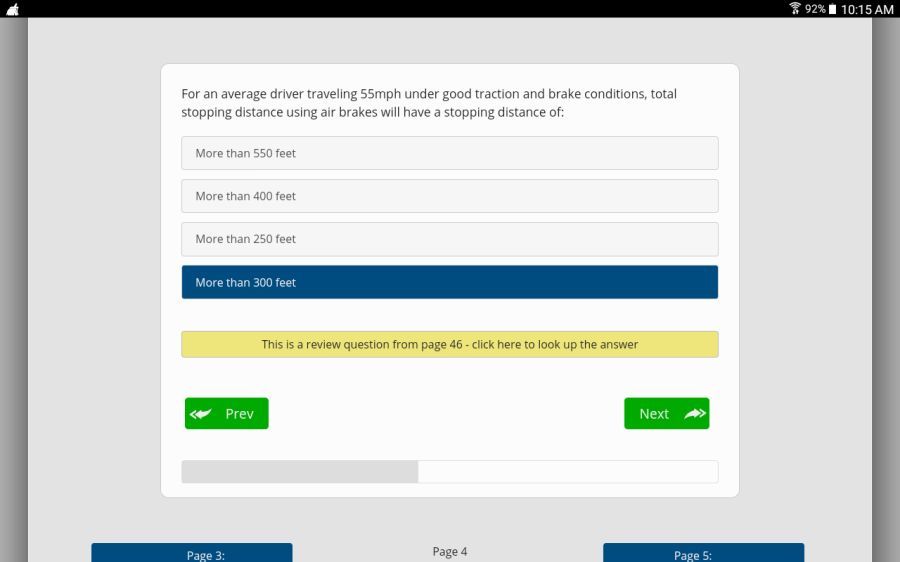High Road CDL Practice Question Is Wrong
Topic 25745 | Page 1

Are you sure about that? Can you elaborate the issue for us?
A loaded truck weighing 80,000 lbs can require twice the length of a football field or more to stop. The lighter the load, the longer the distance! Probably the opposite of what most people think. And rain or slick roads make even more distance necessary.
Here's some more info for you to add to that memory bank that you hang your hat on.
How fast you are traveling affects how well you're able to control a vehicle or stop it.
Stopping distance is determined by 3 factors:
Perception Distance
Reaction Distance
Braking Distance
Total stopping distance = perception distance + reaction distance + braking distance
What are all these distances you ask?
Perception Distance: length the vehicle travels from the time you see a hazard until your brain recognizes it (for alert drivers, approx. 3/4 of a second). At 55 mph, a vehicle travels about 60 feet in 3/4 of a second. For comparison, from the back of the trailer to about 1/2 way through the sleeper (if the driver is pulling a 53' van)
Reaction Distance: length a vehicle travels in the time it takes the brain to tell the foot to push the brake pedal. This reaction takes another 3/4 of a second and another 60 feet. Total distance traveled to this point: 120 feet! (About 1 1/2 truck / trailer lengths)
Braking Distance: length it takes to stop a vehicle once the brakes are applied. At 55 mph, on dry road, and with good brakes, the vehicle travels approx. 390 more feet in 4.5 seconds before stopping. Total stopping distance from the appearance of the hazard = approximately 6 seconds and 510 feet!
TWIC:
Transportation Worker Identification Credential
Truck drivers who regularly pick up from or deliver to the shipping ports will often be required to carry a TWIC card.
Your TWIC is a tamper-resistant biometric card which acts as both your identification in secure areas, as well as an indicator of you having passed the necessary security clearance. TWIC cards are valid for five years. The issuance of TWIC cards is overseen by the Transportation Security Administration and the Department of Homeland Security.
Well what I was getting at is that the answer is wrong and needs to be corrected on the web site. It needs to be corrected on the tutorial ecause every time I take the practic test the correct answer is 300 feet. And you forgot about brake lag time for "air brakes" adding another 32 feet at 55 mph. So at 55 miles per hour you have: Perception distance at 154 feet Reaction distance at 61 feet Air Brake Lag at 32 feet Brakeing Distance at 216 feet Total stopping distance = 451 feet Making the correct answer OVER 400 FEET However I get penalized for answering correctly and claims the correct answer to be as pictured above at 300
New Reply:
New! Check out our help videos for a better understanding of our forum features

















Preview:








 TT On Facebook
TT On Facebook